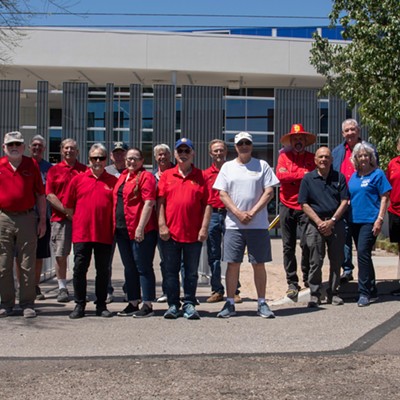"If we don't do something," says Colette Altaffer of the Neighborhood Infill Coalition, "we're going to watch the quality of life (in the central city) deteriorate even further. We're going to see problems intensify, which means those living on the edges of the community may have difficulty getting adequate police protection, because so much of it will have to be concentrated in the inner core."
The Infill Coalition, along with the UA's Drachman Institute, held a series of well-attended public forums late last year as part of their efforts to avoid that scary scenario. Based on the input, they recently released a report that summarizes their recommendations.
The suggestions include preparing new neighborhood plans (and updating existing plans); reviewing the city of Tucson's development procedures to insure consistency of application; having city government appoint a neighborhood ombudsman; insuring that parking regulations are adequate; and providing protection for small-scale open space in neighborhoods.
"We must preserve this open space any way we can," Altaffer says. "Whether it's a neighborhood park or a shaded courtyard in a new development, we need green areas that preserve natural vegetation."
The report also contains several controversial proposals, beginning with one that addresses existing zoning that conflicts with actual land uses. Central Tucson is loaded with single-family development built on high-density residential and commercial zoned land, a pattern City Councilwoman Kathleen Dunbar calls "crazy zoning." The Infill Coalition thinks this is a time bomb just waiting to go off.
One suggestion from the group is the promotion of voluntary down-zoning of this land by property owners. Albert Elias, Tucson's planning director, remembers that a similar effort failed almost 20 years ago.
"The mayor and council authorized down-zoning in the downtown area," he recalls, "but the property owners had to ask for it. There were many parcels that were eligible, but only two or three applications were processed by the city in five years."
Altaffer thinks City Hall should first assist people in mapping their neighborhoods in order to show people what zoning currently exists.
"If we can get people aware of what is there," she says, "to preserve their quality of life, they may want to rezone it for single-family residential use." But, she cautions, "The re-zoning process is very expensive. In these cases, there should be a way to make it simple and inexpensive."
The infill report sharply criticizes Tucson's Board of Adjustment, claiming it grants illegal land-use variances and approves already-built projects that violate local development codes. The board is additionally chastised for handing out some parking variances "without a rational basis."
While declining to comment on the report, Board of Adjustment Chairman Steven Shell did say, "It's unfortunate people don't understand what the board is there for."
Another controversial item contained in the report concerns the UA, and suggests that the student code of conduct be enforced "to deal with inappropriate behavior that occurs off-campus."
A similar proposal was made about 15 years ago, but was rejected by the university. Citing legal restrictions, they declined to act on the idea, limiting off-campus code of conduct enforcement only to major felonies.
The possibility of formulating different land-use code requirements for existing (as compared to newly developing) neighborhoods may stand a better chance of implementation. City Councilwoman Shirley Scott thinks it should at least be evaluated.
"The central city has issues that must be addressed," she says. "The (present) cookie-cutter approach won't serve us very well on vast tracks of vacant land. Having codes that address a magnitude of issues is worth considering."
From her perspective, Infill Coalition member Tracy Williams believes that officials must immediately focus on the two most easily implemented items mentioned in the report. First, she says, the legal notices that are sent out about proposed land use changes need to be vastly improved.
"They should be written so a lay person can understand them," Williams says. "They should be readable and comprehensible, and this needs to be done pronto."
After urging by Williams and others, the City Council recently directed that this goal be accomplished. Development Services Director Ernie Duarte agrees that the notices are overly bureaucratic and full of legalese, but indicates it is premature to set a time schedule for completing the revisions.
Williams would also like to see a design-guidelines manual for new development instituted quickly in order to achieve more compatibility between infill projects and existing neighborhoods.
Elias says draft guidelines were submitted to the Tucson Planning Commission several years ago, but that the commission "hated them." City staff members have since rethought the issue, and Elias says it might be one of a series of ideas proposed to the Planning Commission's Infill Subcommittee.
Williams hopes this subcommittee, along with two from the City Council, will seriously address the issues raised by the infill report. If they don't, she says, major trouble lurks down the road for central Tucson.
"It will be a disaster if things haven't changed in the next five years," she says. "There will be a lot of unhappy long-term residents.
"Tucson's neighborhoods are starting to wake up," Williams says. "Citizens are taking back ownership of their town, saying 'We've had enough.' It's time for the city government to look out for all of us--builders, new residents and long-term citizens."









